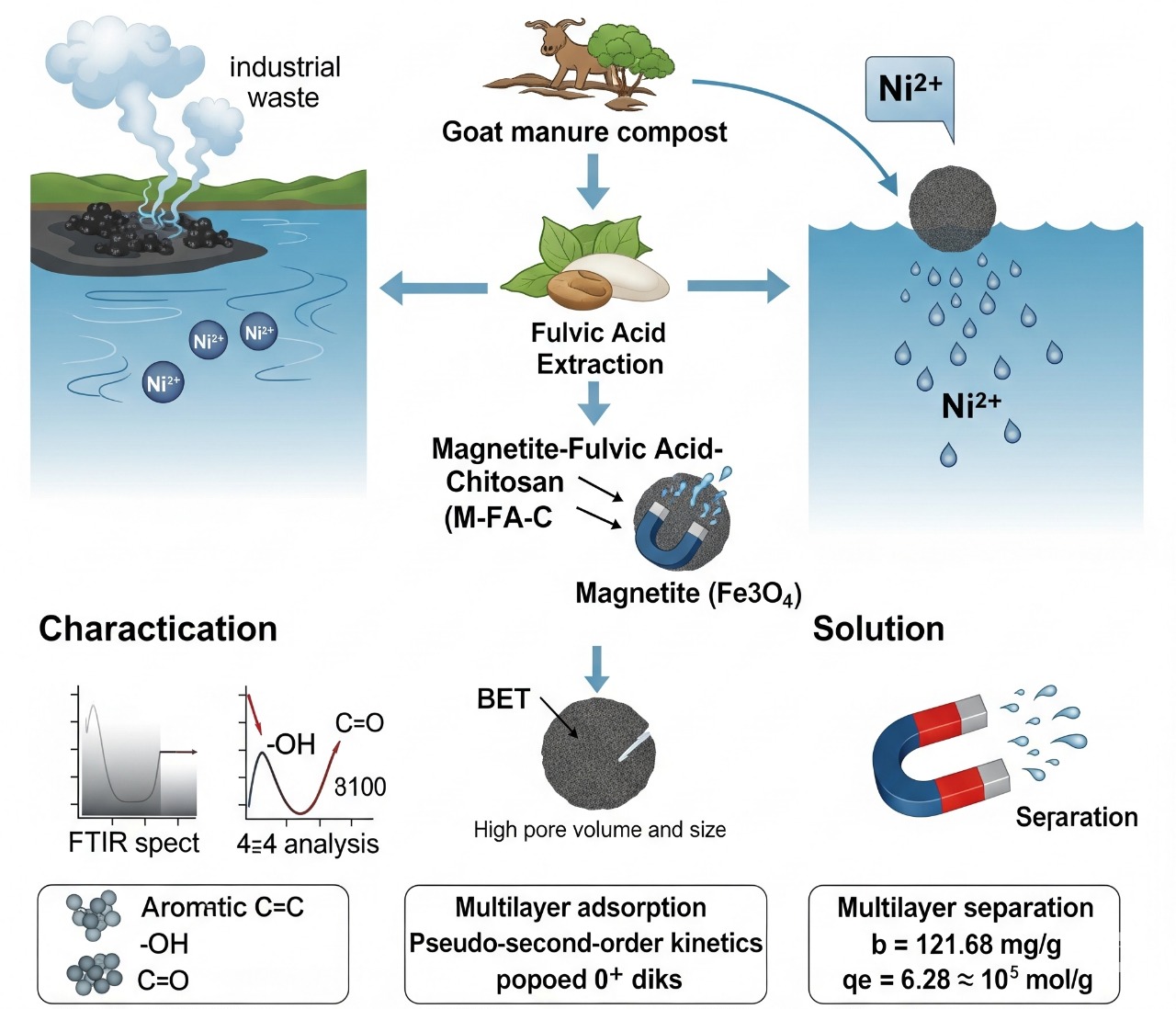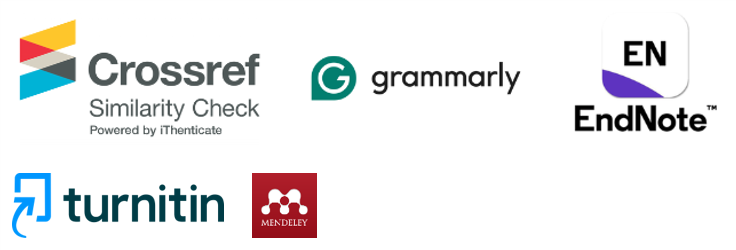Adsorption Ni(II) on Magnetic Fulvic Acid-Chitosan: Kinetics and Isotherm Study
DOI:
https://doi.org/10.55749/ss.v1i1.79Keywords:
Adsorption, Fulvic Acid, Chitosan, Magnetite, Ni(II)Abstract
Indonesia, as one of the most populous countries in the world, requires clean water sources. Industrial waste that is improperly discharged pollutes water bodies with hazardous metals. Adsorption is one of the effective methods for reducing the concentration of harmful metals in water. This study utilized fulvic acid extracted from goat manure compost and combined it with chitosan and magnetite as an adsorbent material for Ni(II). The FTIR results for the magnetite-fulvic acid-chitosan composite showed a peak at 1627 cm⁻¹, indicating the presence of aromatic C=C, aromatic ring -OH, and quinone C=O groups, which confirm the binding of fulvic acid. BET analysis was performed on magnetite and magnetite-fulvic acid-chitosan, and the pore volume and pore size were found to be 0.177488 cm³/g and 6.5394 nm, respectively. The composite exhibited magnetic behavior due to the attraction between the magnetite-fulvic acid-chitosan and an external magnet. Adsorption tests using isotherm and kinetic models revealed that Ni(II) adsorption followed a multilayer mechanism and pseudo-second-order kinetics, with a b value of 121.68 mg/g and an experimental qe of 6.28 × 10⁻⁵ mol/g. This shows that the magnetite-fulvic acid-chitosan composite is a promising, sustainable, and magnetically separable adsorbent for the effective removal of nickel ions from contaminated water.

Downloads
Published
Issue
Section
License
Copyright (c) 2025 Sorption Studies

This work is licensed under a Creative Commons Attribution-ShareAlike 4.0 International License.






